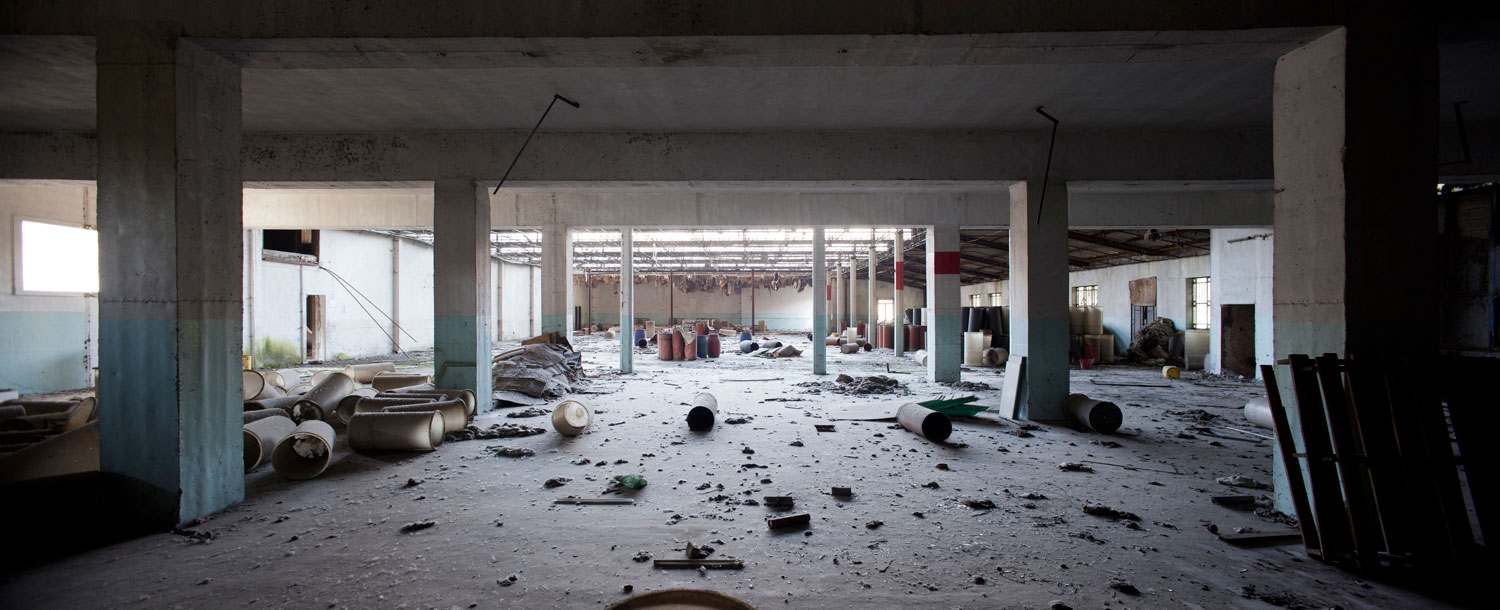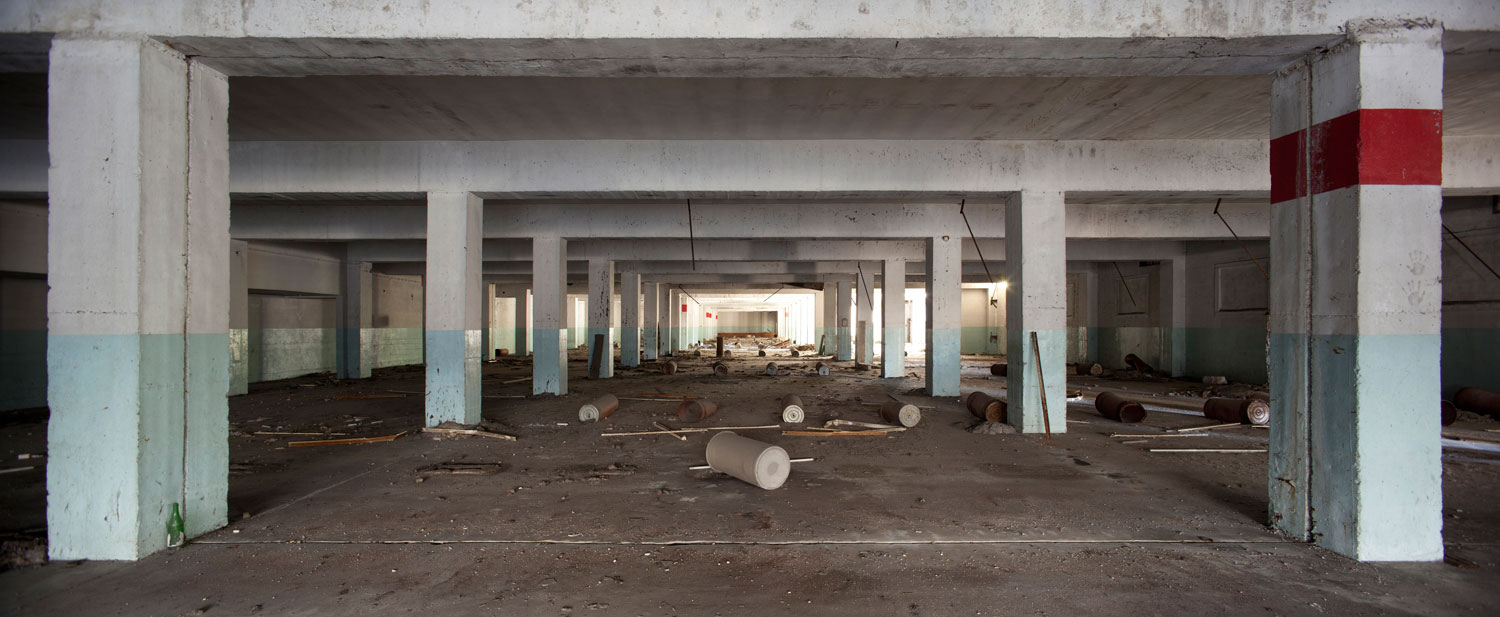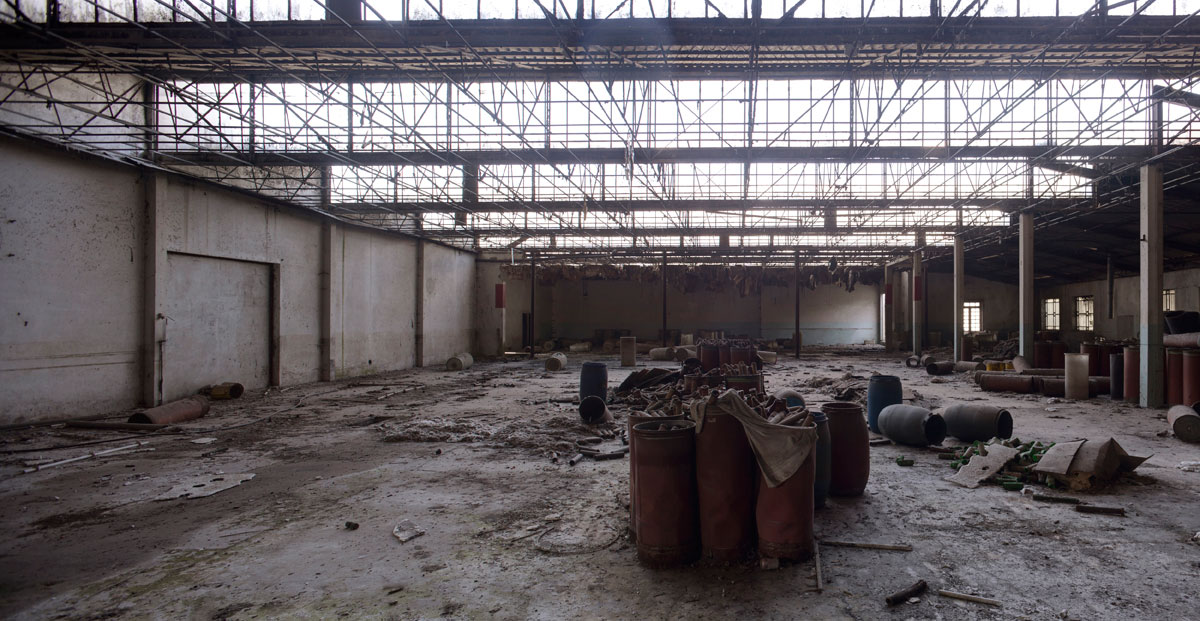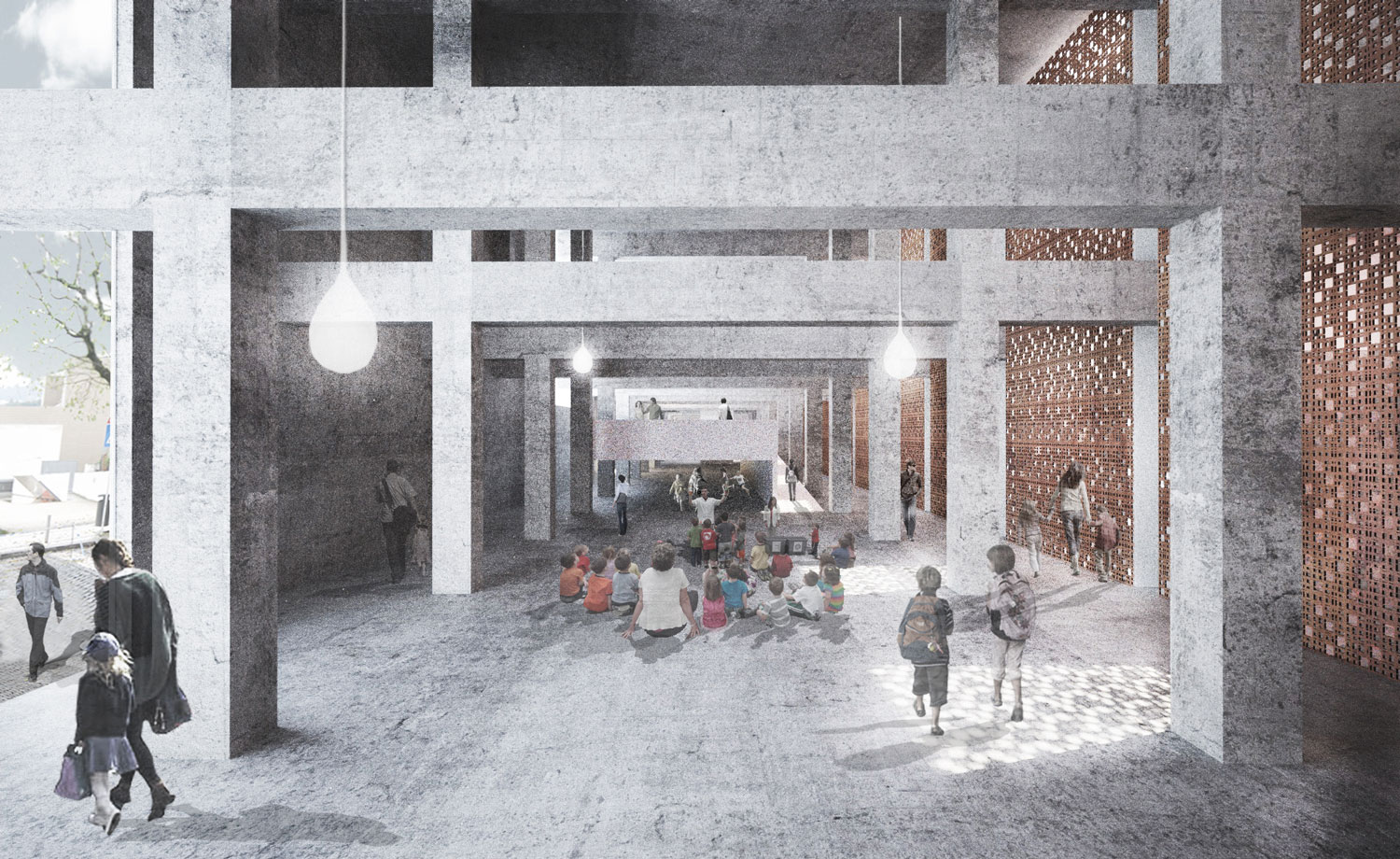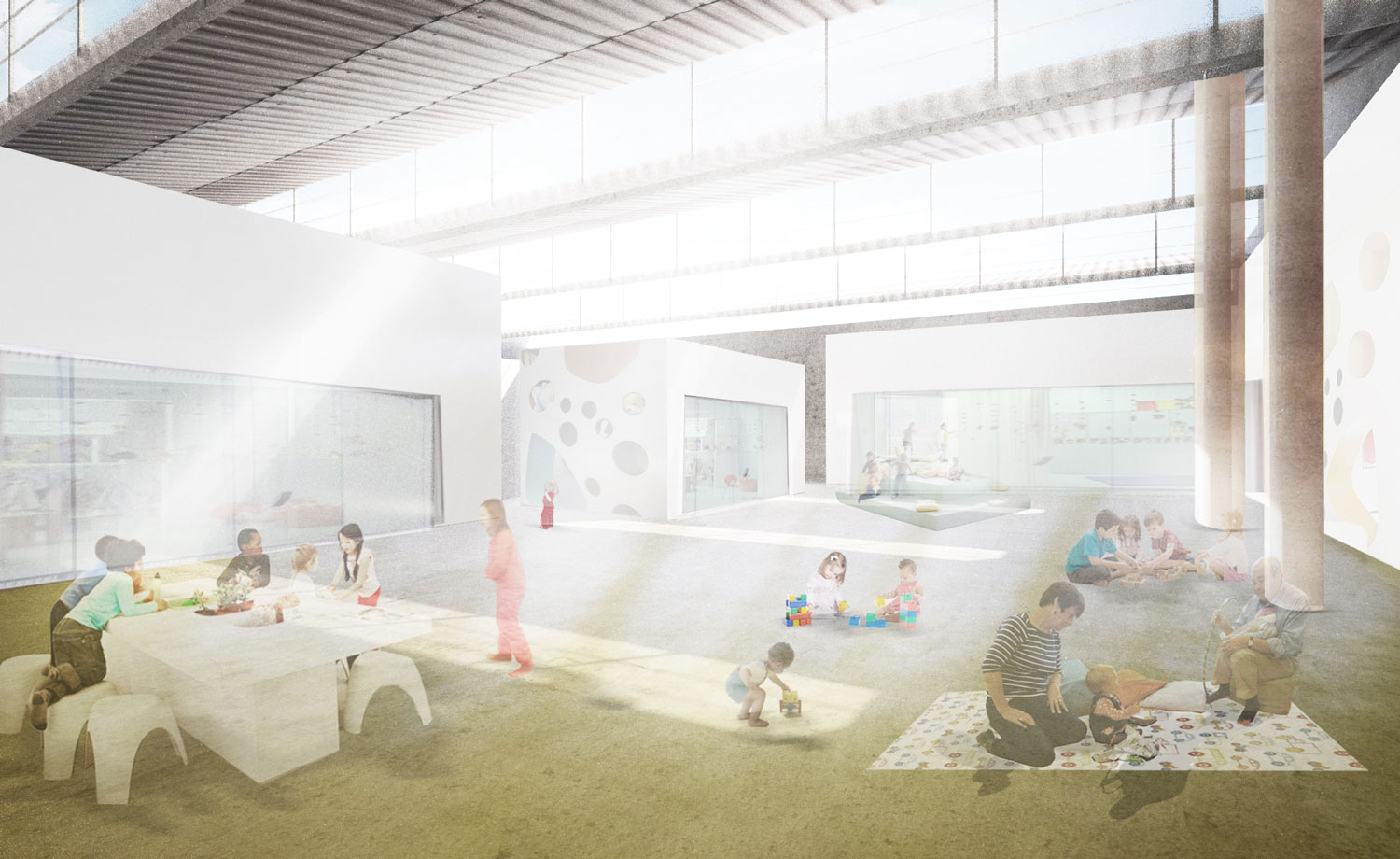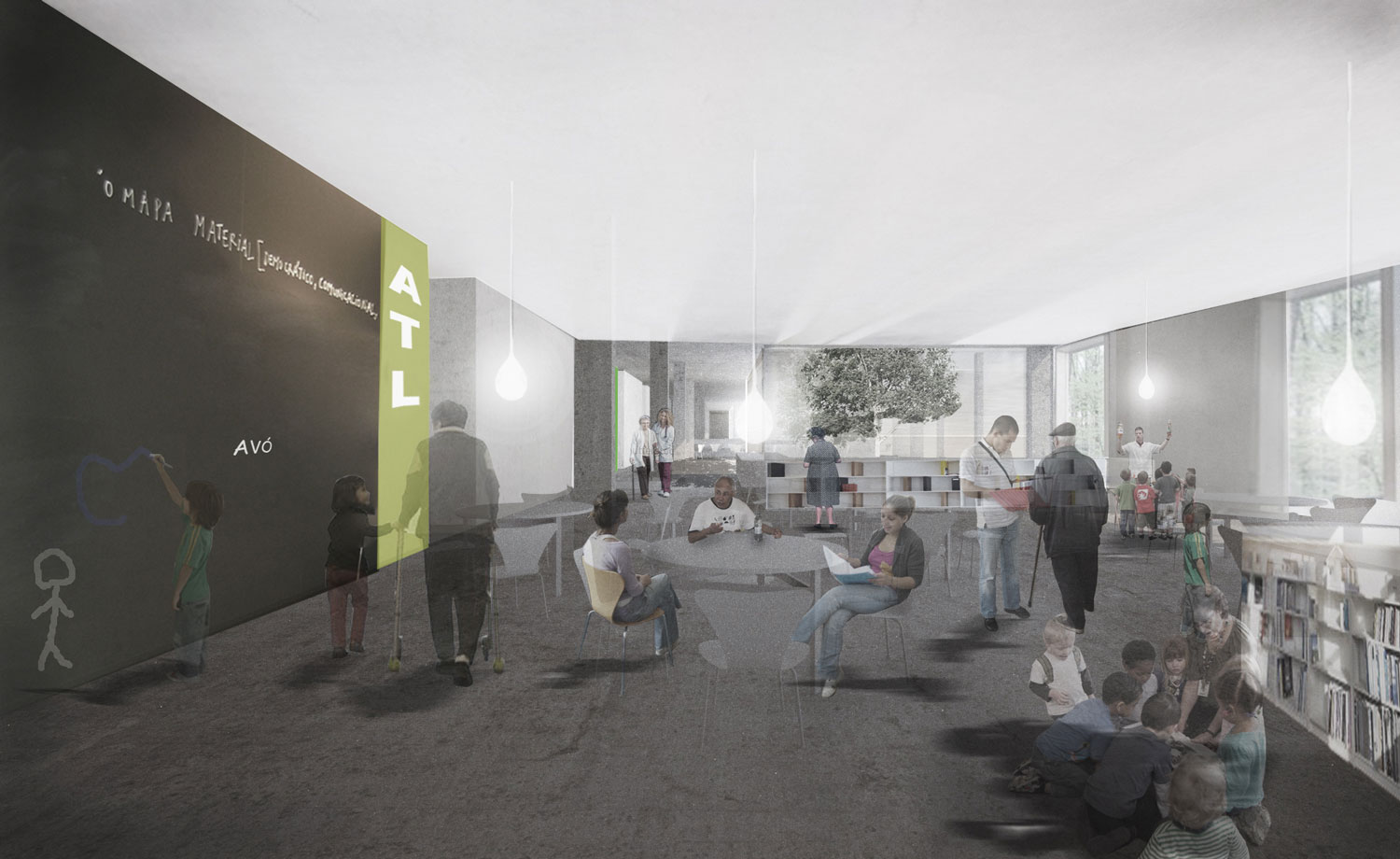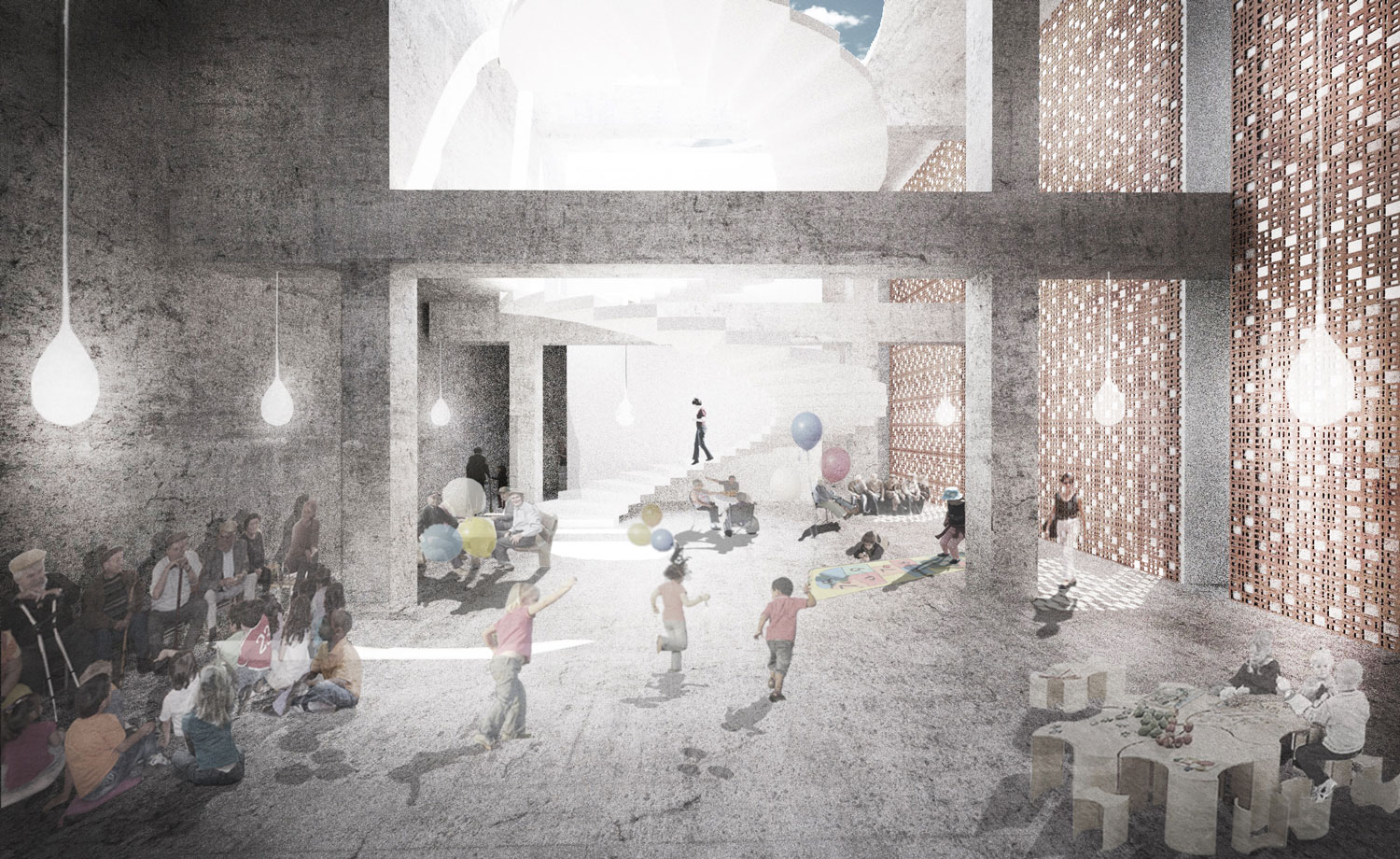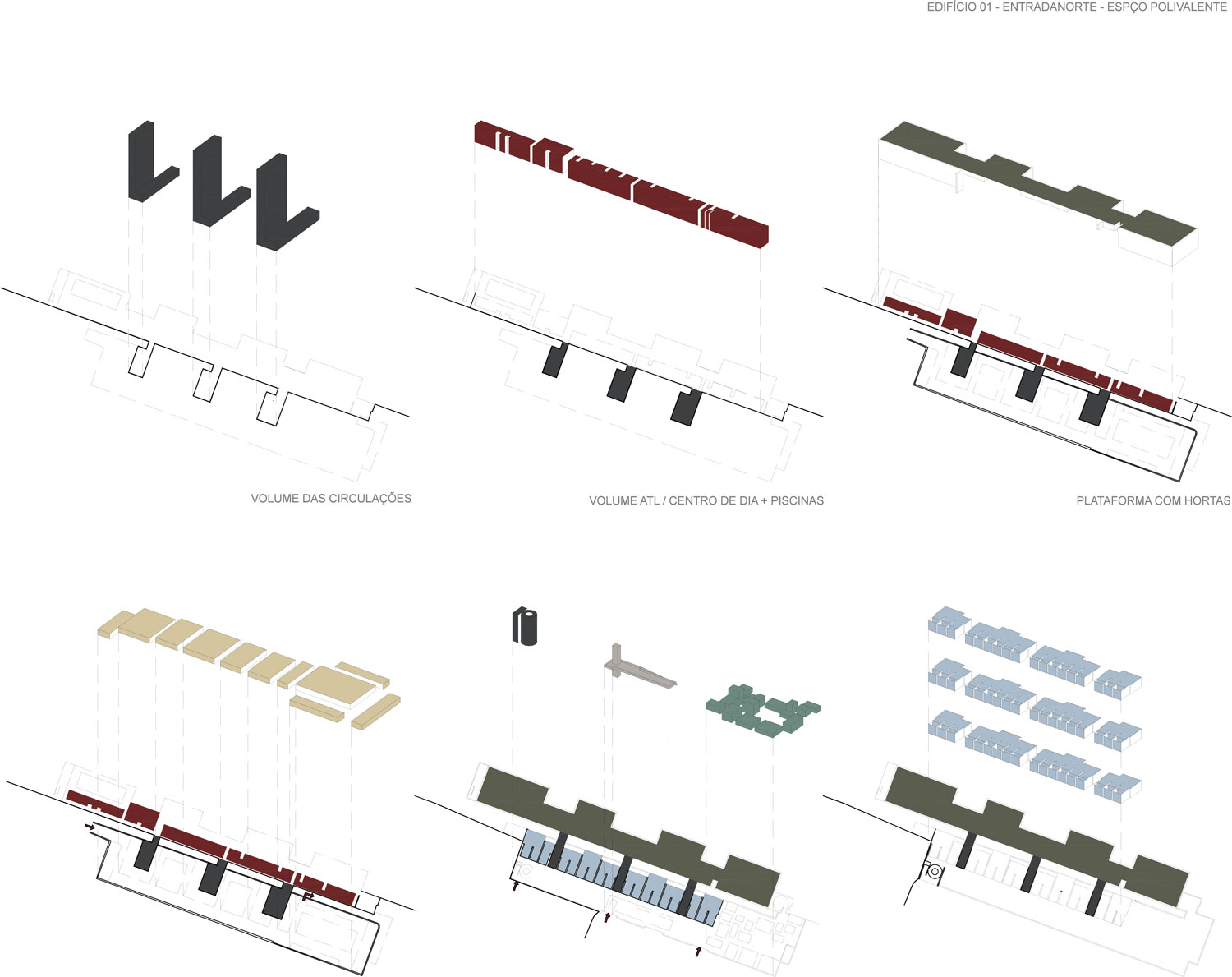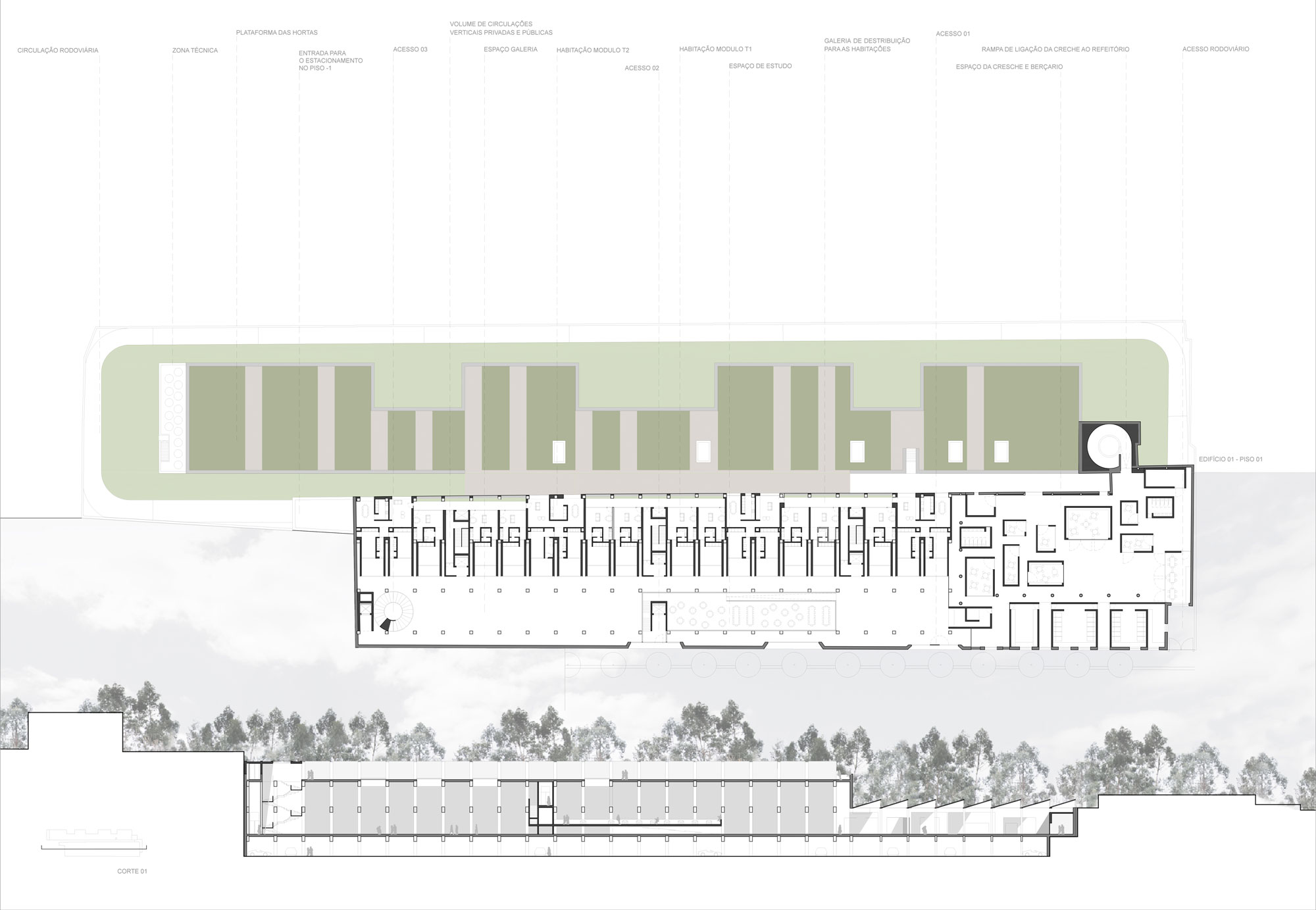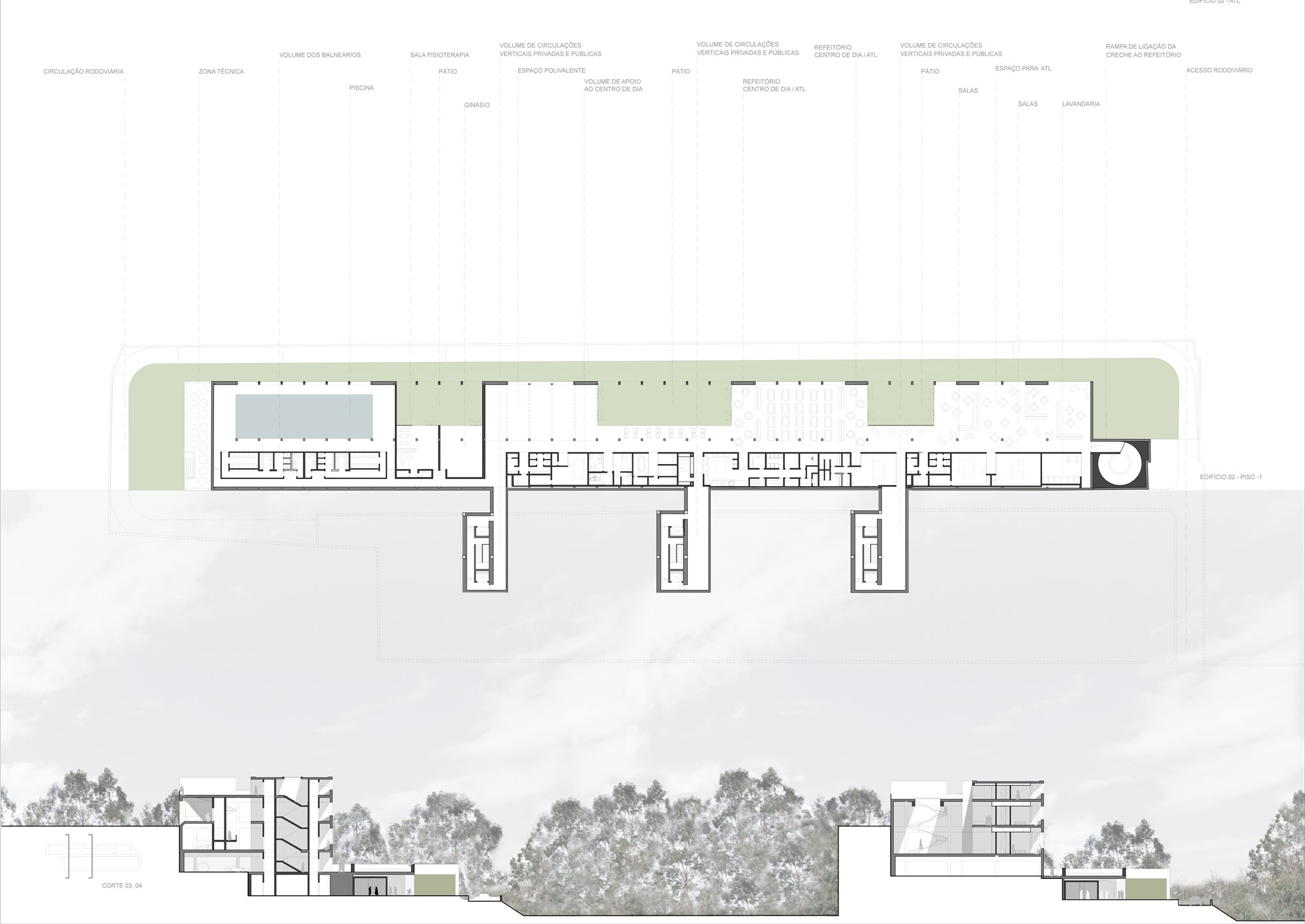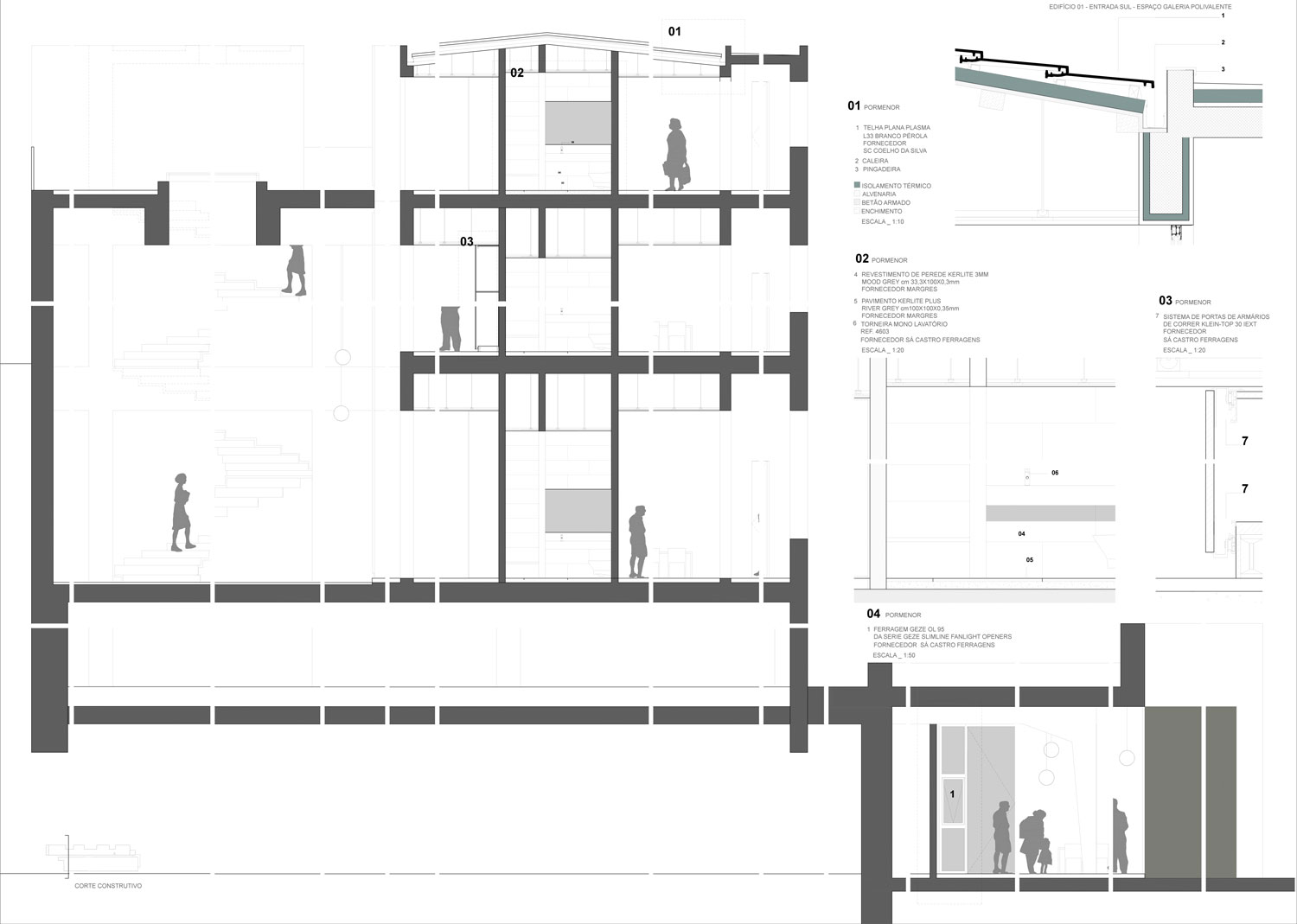1270-AVI-PT-2012
Client: Desafios Urbanos
Status: Competition (2012)
Location: Cavalinho, Portugal
Coordinates: 40.9973966,-8.5983188
Climate: Oceanic / maritime, Temperate
Materials: Brick, Concrete
Environment: Industrial
Visualizer: Studio
Scale: Large
Types: Education, Refurbishment, School
“Demographic aging is the most important phenomenon of XXI century in developed societies due to its implications for the socio-economic sphere, in addition to the changes that are reflected at the individual level and new lifestyles” – (Carrilho e Gonçalves, 2004, p.177)
According to European studies, the world population is aging. The problem is global and urgent. In Portugal there is an exponential increase, we are one of the oldest countries of Europe according to INE (National Institute of Statistics) data. The Portuguese situation as currently reached the highest levels of agging population. The reasons for this growth of the elderly population are due mostly to low birth rates and the consequent increase in life expectancy.
The social response to this problem is perennial and urgent. To this should be added the pace of life of the workforce and their lack of time to monitor the growth of children and youth. Given the demographic analysis in Portugal and sensitive urgency and relevance in the subject of reflection «active ageing and solidarity between generations», the program proposes a space that promotes dynamic social interaction and the experience between the two extremes of the age pyramid.
Improving living conditions were felt particularly in the late twentieth century, defined not only an increase in average life expectancy but also marked a decrease in infant mortality. However, the increase in average life expectancy changed the path of «innactivite» natural course of life and age group of older people. Old age no longer defines the interruption of the employment phase, antagonistically increasing the retirement age to 65 years has been to encourage the growth of the movement in a more active society for more years (Daré, 2010)
Vision
A building that incorporates a program that promotes the involvement of two age groups children / young people and the elderly in social activities and sports training. The equipment consists of two buildings with a mixed program that can respond to the specific needs of the 1st and 3rd generation and provide the convivial sharing social environment.
The remaining spaces including Assisted Housing reach a level of excellence in integrating this set a housing program for inter-generation contact. This combination breaks the rigid image of housing and generally tight spaces to an age group. It allows a socially inclusiveness, exchange of experiences and knowledge.
The elderly will feel participant and active. The relationship with the younger generations similar to commonly experienced on a day-to-day, reduce the sense of alienation of the place will promote mental and physical well-being.
«(…) And noted how it was nice to have to talk to instead of speaking only with you and the sea. (…)» – Ernest Hemingway (1956), o Velho e o Mar, edição livros do brasil.
Youth / children will have the opportunity to adquire and meld into the vast knowledge and wisdom inherent to the third generation. As a result, we decrease the discrepancy of social values, both the first and the third generation.
«(…), Older embarking on honest conversations, but full of playfulness and joy. Far from talking exclusively, they like to listen to young people; even cause their bursts in order to enjoy them the nature of the character and spirit. «(More, 1995, p. 32)
Strategy / concept
Existing situation
The textile manufactures Cavalinho, currently constitutes a building consisting of two separate volumes uneven to each other. The building with direct relation to Avenida Dom Afonso Henriques consists of three floors. Being one of the buildings at below Avenue level. Access to this would be through the three large spans with dimensions of industrial equipment and a small opening on a human scale, to the south. Down the street level floor is the second building consists of two floors. Access to this is made from the patio area.
The building inserts in a heterogeneous urban mesh between classified buildings as well as equipment typologies with a contemporaneous language such as the Centro Cultural Vila Flor. The north and south establish continuity through the Avenue with a hotel south and a workshop north. It is considered as an architectural of interest at the beginning of degradation, with the main body (weaving body) in better condition than the colouring body (body containing wells to dye textiles). Not so with the exterior spaces of the building, uncharacterized giving an unqualified environment to most of the equipment.
Proposal
The intervention aims to transform the former textile manufacture Building in an outfit composed of ASSISTED HOUSING, KINDERGARTEN, ATL, DAY CARE, AND SWIMMING POOL.
The proposal seeks a simple action and transformation, rehabilitation and upgrading of the old textile factory.
BUILDING 01 Is a three-story in direct relation with the Dom Afonso Henriques Avenue. In this, it proposes the introduction of new functional valences without a profound change in its constructive nature. Trying to maintain the building’s character by entering all necessary technical infrastructure through methodologies that minimize intrusion actions.
Given the conditions of access, structural and space, we chose to focus this body the Housing areas, kindergarten and parking.
It is proposed replacement of the original AV gaps in the facade. Dom Afonso Henriques. Currently partially closed.
The building occupancy is made in a logical full / empty, autonomous volumes that articulate with the existing structure. The volumes contain the proposed program.
Thus we have the housing volume disposed longitudinally on floors 01, 02 and coverage. These occupy part of the building width, the remaining area is «torn» until the coverage, thus generating a generous gallery space along which you can access different levels, always from the AV. Dom Afonso Henriques.
At the north end of the building the floor at the avenue level is developed to grow, where small volumes with the respective program are willingly settled to areas of circulation and recreational space.
The floor -1 is occupied with the parking area of the equipment.
BUILDING 02 consists of two floors, floor 0 and floor -1. The level 0 is an uninteresting space with ephemeral structural character. We chose to keep only the floor -1 with a similar structure to the building 01.
In the same logic of occupation Full / Empty, articulated a set of volumes along with the blind facade of the building. The volumes are part of the program planned for the ATL, Day Care and Pools Center. The remaining depth of the building is occupied according to a logic of open space.
As the elevation of the open space which has greater visual relationship with the existing green mass to the west and which is the space of socialization / interaction of the equipment, it was decided to open the building to the landscape. Thus it is proposed along this outer areas stay entering the building perimeter shortening its depth.
The floor covering -1 is in the building’s level 01. In the area, which was removed the existing structure, it proposes a garden space. This aims to be one of the spaces of inclusion, interaction, passing knowledge among users of the equipment 1 / 3rd generation.
Circulation
The existing road access is maintained. The circulation inside, which originally was made between the two buildings, has changed. This goes around the perimeter of the lot. At the south end of the building 01 is the entrance to the garage (level -1). The output is at the north end of it. Between the output and the driveway is pedestrian access to the building exterior 01 and 02 as well as the zone of gardens.
The pedestrian access to the equipment is made from Av. Dom. Afonso Henriques. There are three access points, two at the ends and in the middle. And only the entrance on the south end, as in coverage is proposed the remaining two are held from the existing gaps. Throughout the building, part of the volume of housing is proposed three volumes that will allow the inner circulation between the two buildings. The same volume integrates the vertical movement of the building 01.
In building 02, direct access to the outside happens in green spaces designed.
Materials
The materials follow a logic of sustainability and concerns using as much as the remain building structure. The new interventions are made of concrete in their structure and access, the volumes made of brick. The separation between the main space and the housing areas is corten steel perforated with a pattern to allow light to invade and fill the spaces.
